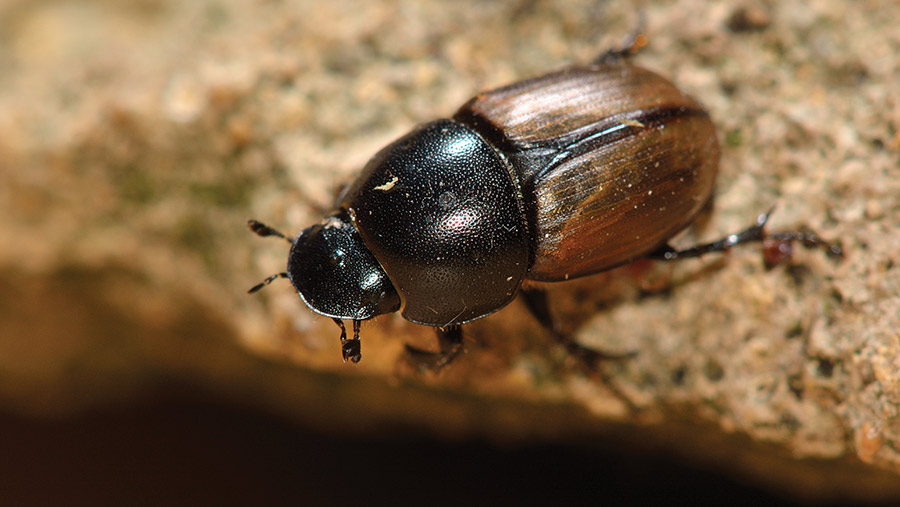How regenerative farming can improve livestock health
 © Adobe Stock
© Adobe Stock Claire Whittle is a veterinary surgeon at LLM Farm Vets. She has been awarded a 2021 Nuffield Farming Scholarship for work on regenerative agriculture in the livestock sector.
She explains some of the key ways livestock farmers can work regenerative farming practices into grassland management to improve livestock health.
For livestock farmers interested in soil health, there may be opportunities for animals to benefit from the same strategies that improve soil fertility and productivity.
Incorporating crops – such as chicory, for example, which benefits soil health in terms of tap root depth and drought resistance – into your grazing systems can also be advantageous to livestock.
Trees and chicory
This crop has been shown to have the capacity to reduce worm burdens in grazing sheep. Longer sward lengths in pasture may also protect against parasite burdens, as worm eggs are most often found at the base of grass stalks.
We know trees provide ecosystem services including flood mitigation, but what about the benefits they can bring for livestock?
Trees, such as alder and willow, are known to contain trace elements and there are several reports on willows’ anti-inflammatory properties, with work underway to understand this better.
Tree fodder could help livestock express more “natural” behaviours – an important welfare consideration for animals’ browsing potential – as well as offering shelter.
Cattle and sheep are more able to regulate their core temperature when dry, and tree cover also provides shade to keep them cooler in hot weather. Hedges can offer a similar service in rotational systems.
See also: More livestock health content in our Know How centre
Dung beetles
The role of invertebrates such as earthworms and bees in arable and grazing systems has been well researched, and dung beetles should not be underestimated. Studies have shown that dung beetles are worth nearly £400m/year to the UK livestock industry in ecosystem services.
Dung beetles help control nuisance fly populations by eating the liquid portion of cow and sheep faeces, drying it out and making it uninhabitable for flies to lay their eggs and for gut worms to thrive.
They also carry phoretic mites that eat fly eggs. These mites, which cannot fly, use dung beetles to hitch a ride from pat to pat.
Tunnelling dung beetles pull organic matter down into the soil by burying it underground, in which to lay their eggs. This not only improves pasture cleanliness but aids carbon sequestration, too.
The beetles are effectively “pasture-vacuum cleaners” and can decimate a pat within days, as well as being an important food source for birds and bats.
However, the number of dung beetle species in the UK has drastically declined – more than 50% of species have become extinct.
Increased winter housing of animals means some overwintering species don’t get the opportunity to flourish as they once did, and ivermectin-based worming products are also detrimental to dung beetle populations, limiting their ability to reproduce.
When performing regular faecal egg counts on livestock, it is important to use the right product at the right time.
Administering worm treatment only when necessary will lessen the effects on these beetles and reduce the risk of anthelmintic resistance in livestock.
It is advisable to speak to your vet about parasite control planning before implementing worming strategies on your farm.
Manure
Recent studies from Rothamsted Research have demonstrated that organic matter, such as manure, is imperative in our ecosystems to improve drought and flood resistance. Increasing numbers of arable farmers are also using livestock as part of their rotation.
It is important to choose the right animals for your system – many farmers are now looking at breeding animals that perform well in these systems. As ever, the most efficient animals in any system are those that will yield the most profit.
